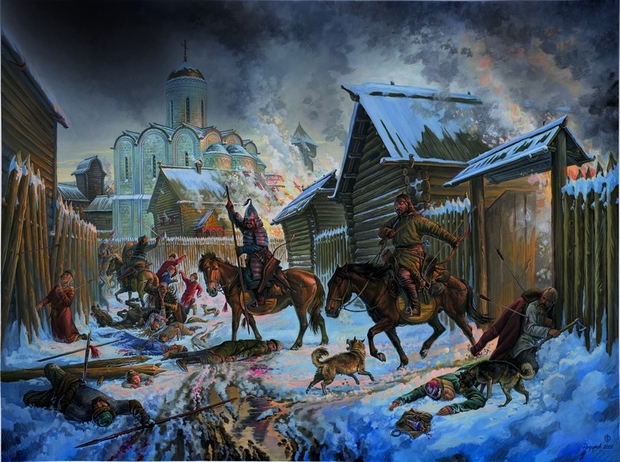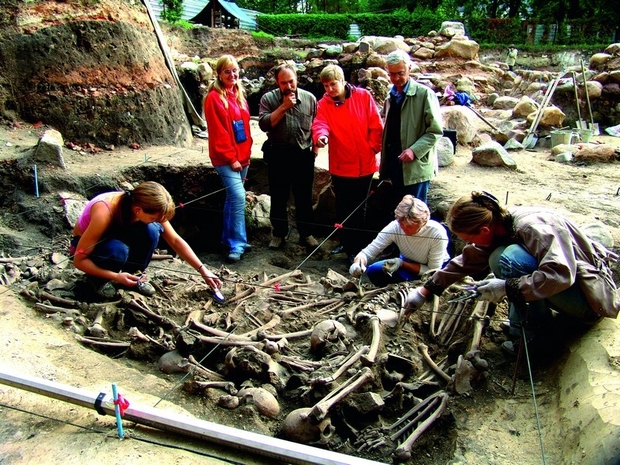Asya Engovatova: ''It's inappropriate name — ''Tatar-Mongol'' invasion, firmly established in literature''
Famous archaeologist, Asya Engovatova, tells why the 1000th anniversary of Kazan raises no doubts, how the campaign of the Bulgars against Yaroslavl helped to establish the age of the city and about the Mongolian tactics to destroy an enemy
Is it easy to make the age of a city much older in the pursuit of status? How serious are errors the coin finds give? What horrible traces were left by the Horde on the territories of Central Asia, the Caucasus, Kievan Rus' and Hungary? Candidate of Historical Sciences, Deputy Director of the Institute of Archaeology of the Academy of Science of Russia Asya Engovatova answered the questions to Realnoe Vremya.
''Precision of dates is given on the basis of some political reasons''
What do you think about the 1000th anniversary of Kazan, do you believe in it? After all, there are no direct historical sources, and the main evidence establishing the date is archaeological finds, hence quite a lot of criticism...
In the Russian and world practice, it is accepted to date the foundation of a city from the first mention in chronicles. It is a common practice. But the question is, what about those cities that are mentioned late, but at the same time, it is evident that they existed before. Already in the Soviet era, if I'm not mistaken, an academician B. A. Rybakov proposed for Kiev a system to determine the date of a city's foundation by archaeological material. But it should be noted that the question of chronological accuracy of archaeological material is a very serious thing, since the scope of archaeology not always allows us to date with precision with an accuracy not only to a year, but sometimes to 150 years.
After all, things can live for quite a long time. A manufacturing date can be the 16th century, but it can exist until 17th-18th centuries. Especially often it happens in the Church practice, when very old things made centuries ago are used. The same thing happens with jewelry and coin finds.
Things themselves — it's an indicator not very… Nevertheless, it is used to determine the date of foundation of a city. Accuracy here is pretty rough, although in the Soviet era as well as in the modern period, on the basis of this, the foundation dates were given to many cities, not only to Kazan. It is a common practice, and here the precision of a date is given on the basis of some political reasons. It is clear that there is a pre-Mongolian layer in the city, there are findings that tell about the existence of a city in the 12 century or at the beginning of the 13th centuriy — sometimes it is maximum precision of archaeological finds. But coins are quite pleasant exception because very often there is more or less exact date of minting. However, we should understand that the date of minting is not the date of existence of the coin.

''Coins are quite pleasant exception because very often there is more or less exact date of minting. However, we should understand that the date of minting is not the date of existence of the coin.'' Photo: kazan-kremlin.ru
Archaeological techniques have their tolerances, and all experts know it. We have the exact method of radiocarbon dating, but it also has its ''plus/minus'', depending on degree of preservation of organic, collagen in the material. A ''backlash'' here can be from 30 to 150 years or more. It would seem, it is a very accurate method, but it also gives some error. Therefore, when determining the date of the founding of a city in addition to the chronicle there is a certain amount of tolerances.
That is, if you want, you can make the age of a city much older?
Why?
Status? Money?
No, I think it is rather a serious scientific problem — the problem of methodology. If this method was invented only for Kazan, it would look weird. But this method has been used since the Soviet times (for example, Kiev was determined in a similar way). It's just the way that helps us to understand from which period a city life on a particular territory began. In general, the determination of founding date is a complex task, and it seems to me that here Kazan academic experts, who are recognized professionals, are well aware of this. They have digged in dozens of cities and settlements, and they understand the difference between a city and a large village.
''With Yaroslavl, unlike Kazan, the situation was initiated not by archaeologists''
Immediately after the determination of the date of founding of Kazan, it was followed by Yaroslavl: how have you and your group determined its 1000-year age?
As for Yaroslavl, unlike Kazan, the celebration date was originally determined not by archaeologists but historians. There were several conferences at the Institute of History and meetings of leading historians, who together with the city administration of Yaroslavl, with the government, determined the date basing on written sources and chronicle references, and also based on the logic of historical events. There were some error, of course. For Yaroslavl, there was the exact chronicle date, but it was clearly later than the founding of the city, and significantly. The first chronicle date, the year of 1072, refers to the time of the campaign of the Bulgars against Yaroslavl. But since the city has the name (the city of Yaroslav) then, according to historians, this gives grounds to believe that its foundation is connected with Yaroslav the Wise. Archaeological works in the centre of Yaroslavl were connected with construction works but not with the rationale of the 1000th age of the city.

The earliest finds of the remnants of city wall, which professionals managed to find — a piece of luck. In archaeology, a lot depends on luck, coincidence. Here it was in the fact that one of the construction projects was planned on the territory where, perhaps, archaeologists would not dig because it was considered not very promising. But exactly here it was discovered a complex of remains of fortifications: a town wall and a ditch in a very good state of preservation. The complex was investigated, dated using different methods (dendrochronology and radiocarbon) at the first half of the 11th century. Thus, additionally it was confirmed the date of the period of the founding of the city. So, the eleventh century coincided with the assumptions of historians.
''There are such things in Vladimir, as well as on the territory of Tatarstan – it is a common wave…''
In Yaroslavl, you have discovered a mass grave: why was it linked to the Tatar-Mongol invasion? Were there mentions in the Chronicles about the destruction of Yaroslavl by the Horde?
It is a very inappropriate name — ''Tatar-Mongol'' invasion — that is firmly established in our literature. A political component has been laid in the name itself. In foreign literature, this event, if I'm not mistaken, is called more correctly — it is called ''campaigns of Batu Khan''. In the Chronicles, there was the record of the destruction of the city of Yaroslavl. I must say that on the territory of Tatarstan the cities of Bilyar and of Bolgar also suffered during the defeat. There have been found similar mass graves. Archaeologist immediately note a specific tactic of the Mongol army — if a city resists, it is completely destroyed. This tactic is described in numerous archaeological treatises — Chinese, Central Asian. These things also exist on the territory of modern Ukraine, Poland and Hungary. This tactic is quite specific, it is well recognizable.
In Yaroslavl there were found nine mass graves next to each other, all in underground of burnt houses, and one in the pit (a similar grave was found in the settlement of Bilyar). Thanks to the research of anthropologists and entomologists it has been revealed that all dead were lain unburied for several months and only after they were urgently buried in the nearby underground of burned houses. Cranial trauma was discovered of most of the buried, which indicate that people were killed from the top (apparently, they were horsemen).
Such sanitary graves were found in Vladimir, Ryazan, on the territory of Tatarstan. This is a common wave that passed through China, Central Asia, the Caucasus, Kievan Rus', affected the territory of Hungary, Poland (yes, there are also similar graves).

A massacre in Yaroslavl. Are there scholars who do not agree with the version about the Horde?
Objective materials do not give grounds to interpret it as something else. From the point of view of a single wave, which swept ranging from China to Hungary, it is a very bright layer, which affected peoples of the Volga region, Penza oblast…
It also states that Volga Bulgaria and Rus interacted quite closely. Are there some traces of the Bulgars found during the studies of Russian cities? Maybe trading factories?
During the excavations of Russian cities there were found specific Bulgarian pottery (decorated vessels), by which archaeologists tell about the existence of trade relations. The study of material culture gives a lot to our understanding of the Middle Ages, but it does not always fit or compatible with our modern understanding (as we want it to be), but scientists differ from laymen by that they recover the objective truth using arguments.